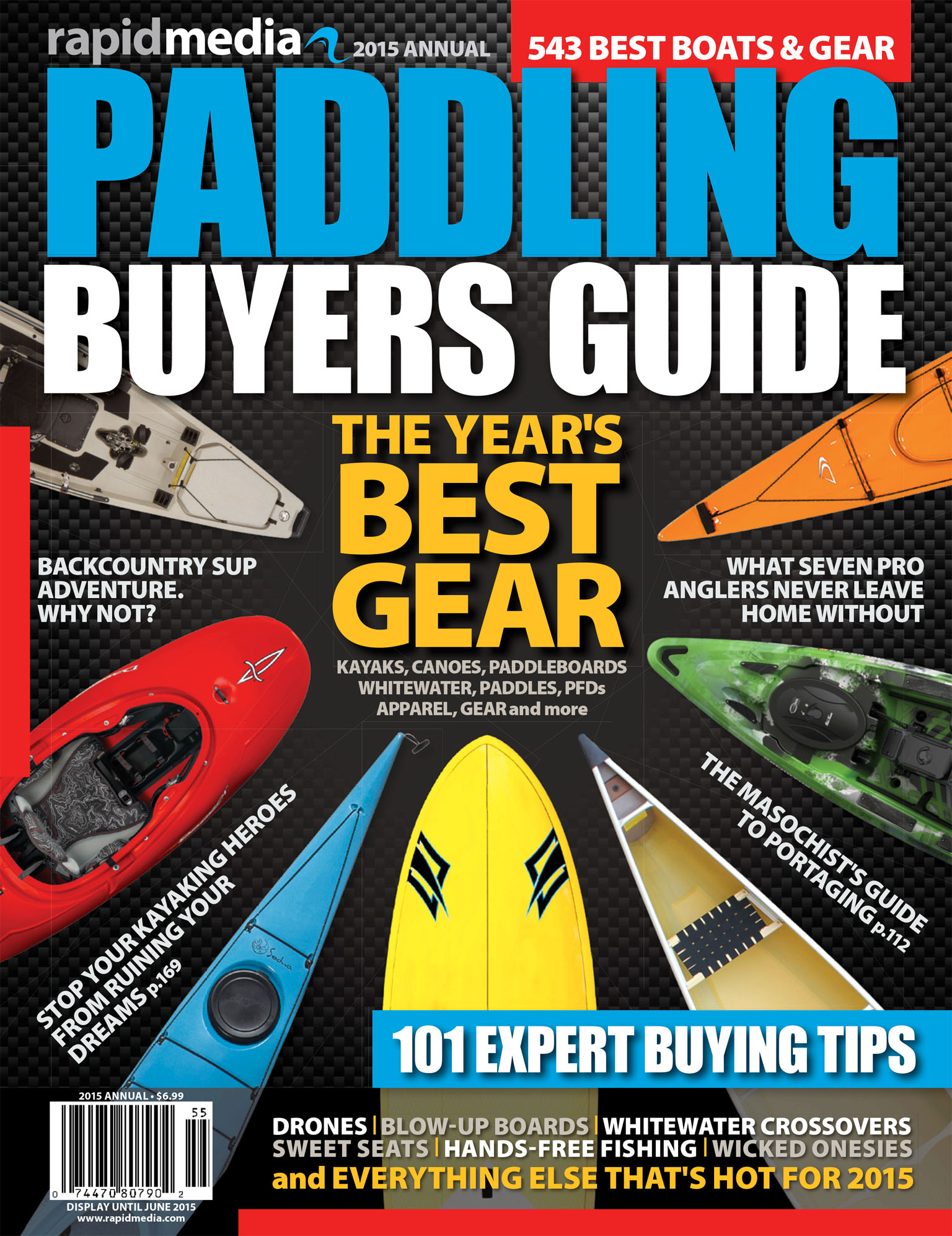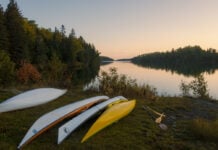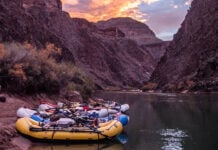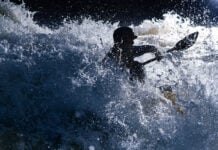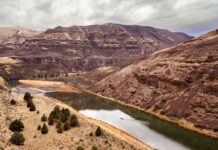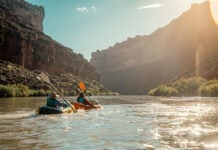Standup paddleboards may not be the obvious backcountry craft for paddlers who typically use them for lake paddling, yoga or surfing ocean swell. Taking your paddleboard on a SUP camping trip can be a great way to travel lakes and scenic stretches of river you might never consider running in a raft or kayak.
Planning your SUP camping trip
Somewhere between bringing the kitchen sink on a traditional raft trip, and sawing off the handle of your toothbrush for a minimalist kayak expedition, lies the art of self-SUPport. Here’s how to plan and pack for your first backcountry board trip.
Location, location, location
A 20- to 30-mile stretch of easy flowing river with class I to II swifts, is ideal for an overnight or weekend trip. A SUP travels faster than a raft, but slower than a kayak, so plan your mileage accordingly.
Assess your speed by loading up your board with overnight equipment and taking it for a test spin at a lake or local river before committing to a multi-day SUP camping trip.
The perfect paddleboard
Choose a large board so you have room to store your gear. Paddleboards built for fishing are great overnight options since they tend to be spacious and stable in moving water.
A board with multiple tie-down points is critical for strapping all your gear down tight. I use extra cam straps to fit around bulky dry bags, instead of just relying on the short straps that came with my board.
The essentials, and then some
If you have basic backpacking gear, you’re almost ready to go. Depending on the season, you should take a light sleeping bag, a small sleeping pad, and a lightweight three-season tent. I stow all of this on the bow of the SUP along with my clothes and hiking shoes in a secured dry bag.
I strap a smaller dry bag to the stern with a small backpacking stove, a pot and other cooking accessories, along with the majority of my food. A lightweight grill and collapsible fire pan gets tied underneath this stern bag. My favorite luxury item for a SUP camping trip is a small, portable cooler filled with steaks, beer and more. Find one that fits your board and has the capacity to carry enough provisions for your trip. A strapped-down cooler also doubles as a seat when you need a break from standing.
Comfy shoes are essential for long periods of standing, and PFDs with generous pockets will allow you to keep snacks and a GPS handy. I always wear a helmet in rapids but bring a big straw sun hat for the flat stretches in between.
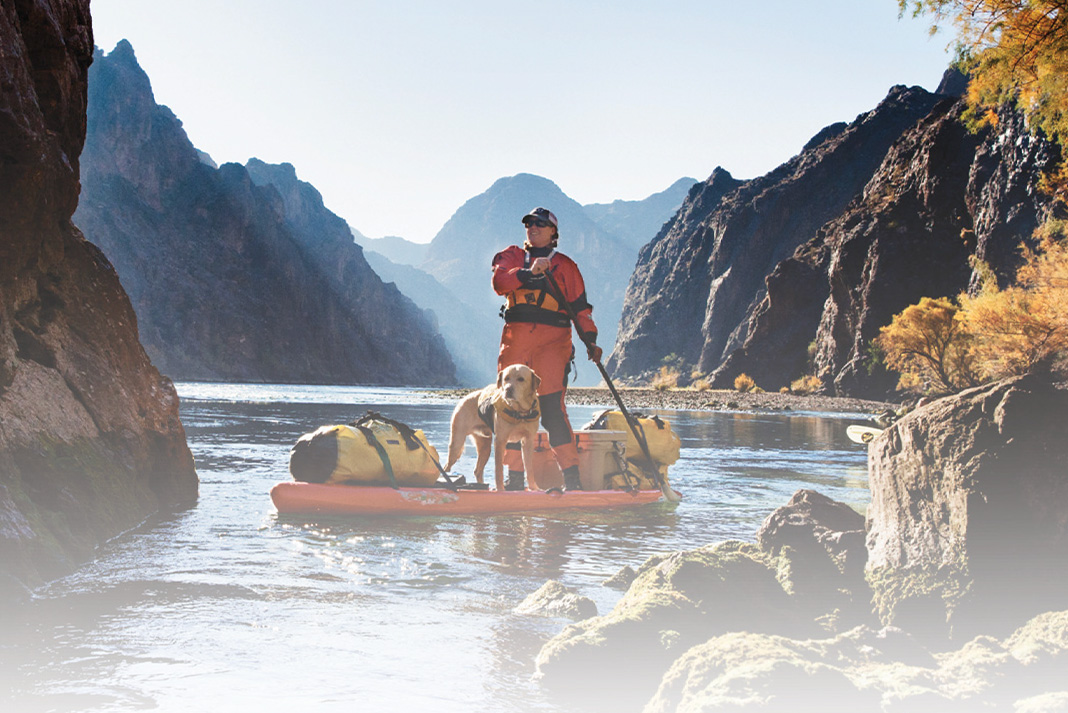
Strike a balance
Before launching, take time to strap everything down and balance out the board. Strive for equal weigh distribution from front to back and side to side. As days go by, you’ll need to adjust where you pack things as the weight of food bags decreases.
Once I ironed out a packing system, it only took me 10 minutes to load and unload each time.
Writer and photographer Peter Holcombe is a contributor to Rapid magazine.
